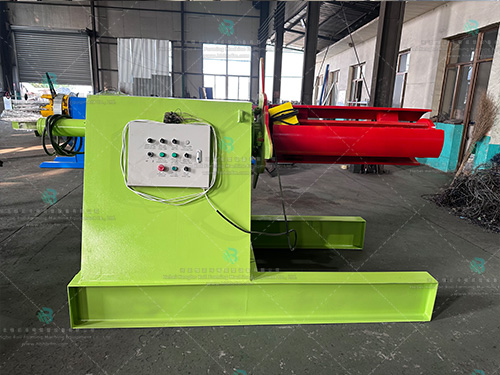The 5-ton uncoiler is a material handling equipment commonly used in industrial production, especially in the metal processing industry, for opening and handling metal coils such as steel coils, aluminum coils, etc. The main function of the uncoiler is to flatten the coil and transport it to subsequent processing equipment such as rolling mills, cutting machines, or packaging lines.
Structure and working principle
A 5-ton uncoiler typically consists of the following main components:
Main frame: As the basic structure of the uncoiler, it is usually welded from high-strength steel to ensure sufficient rigidity and stability.
Hydraulic system: including hydraulic pump, oil tank, hydraulic cylinder, and control valve, responsible for providing and controlling hydraulic power to drive various actions of the unwinding machine.
Hydraulic cylinder: a component that directly executes the discharge action, and achieves the lifting and translation of materials through the extension and contraction of the piston rod.
Control system: As the brain of the unwinding machine, it controls and adjusts the hydraulic system through electrical or hydraulic control components to achieve accurate feeding actions.
The working principle of the uncoiler is based on a hydraulic transmission system, which achieves smooth material discharge, movement, and positioning through processes such as hydraulic pump drive, oil transmission, and control valve adjustment.
Application scenarios
The 5-ton uncoiler is widely used in industries such as steel, aluminum processing, mining, construction, and machinery manufacturing. In these industries, uncoiler can help improve the efficiency and safety of material handling, reduce manual operations, and lower production costs.
Maintenance and usage precautions
In order to confirm the long-term stable operation and extend the service life of the uncoiler, regular maintenance is required, including checking the integrity of each component, cleaning and lubricating, and replacing vulnerable parts. Operators should receive appropriate training to ensure safe and standardized operation of equipment.






